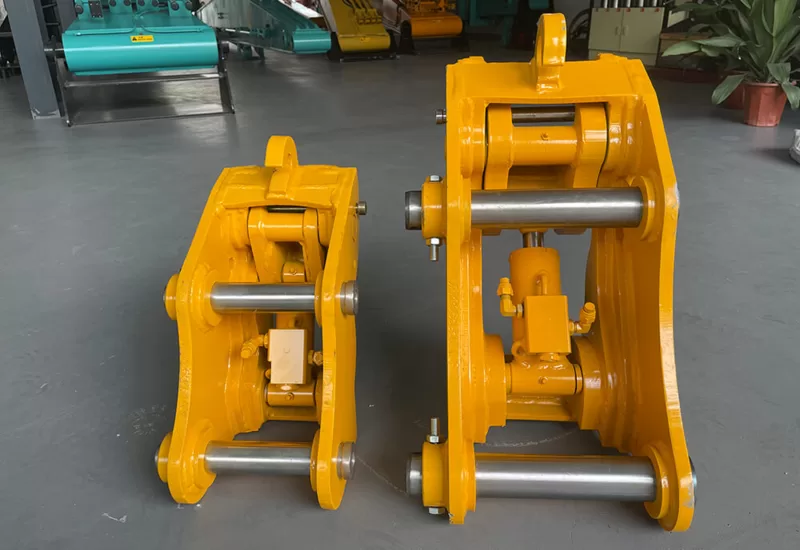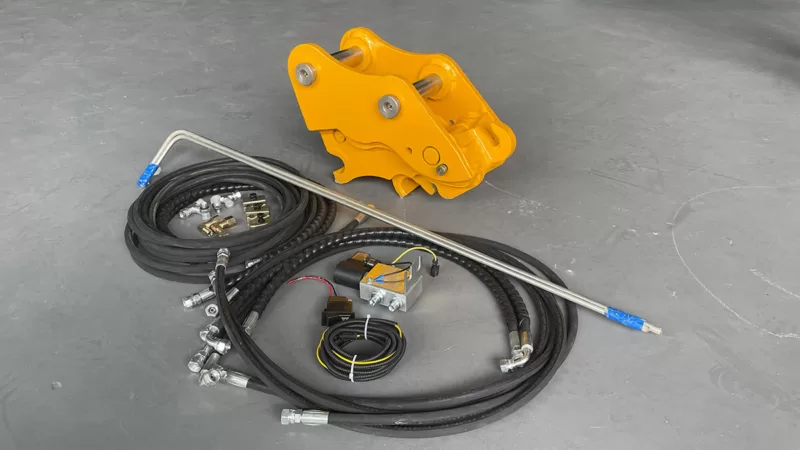Excavators play a vital role in construction and infrastructure development, and the efficiency of their operations depends on the proper functioning of various components. Among these components, quick-change joints play a crucial role in allowing the excavator to switch between different attachments effortlessly. In this article, we delve into the daily maintenance practices that will ensure the smooth operation and longevity of Volvo excavator quick-change joints.

Understanding Volvo Excavator Quick-Change Joints
Quick-change joints are hydraulic systems installed on excavators that enable the swift attachment and detachment of various tools and buckets. Volvo excavators are equipped with robust quick-change joint mechanisms designed to enhance productivity and versatility on job sites. However, like any mechanical component, these joints require regular maintenance to operate optimally.
-
Daily Inspection
A thorough inspection of the quick-change joints is crucial to identify any potential issues or signs of wear and tear. Inspect the joint mechanism, pivot pins, locking mechanism, and hydraulic connections. Look for signs of leakage, damaged seals, or loose components. Addressing these issues promptly can prevent costly breakdowns and ensure the safe operation of the excavator.
-
Cleaning and Lubrication
Dirt, debris, and contaminants can accumulate on the quick-change joints, hindering their smooth operation. Regular cleaning is essential to maintain the joints’ performance. Use a soft brush or compressed air to remove dirt from the joints, paying close attention to the pivot points and locking mechanism. Additionally, lubrication is crucial to reduce friction and extend the life of the joints. Follow the manufacturer’s recommendations for the appropriate lubricant and apply it to the joints as needed.
-
Regular Tightening
Due to the constant vibrations and heavy-duty nature of excavator operations, it is common for bolts and fasteners to loosen over time. Regularly check and tighten all bolts and fasteners associated with the quick-change joints. Be cautious not to overtighten, as it can damage the components. Consult the equipment manual for the recommended torque values.
-
Seal Replacement
The seals in quick-change joints play a vital role in preventing hydraulic fluid leaks and maintaining the joint’s integrity. Over time, seals may wear out or become damaged, compromising the joint’s performance. Inspect the seals regularly and replace them at the first signs of wear or leakage. Ensure to use genuine Volvo replacement seals for optimal performance.
-
Operator Training
Proper training for excavator operators is essential to minimize the risk of joint damage and ensure the correct operation of the quick-change joints. Train operators on the appropriate attachment change procedures, emphasizing the need to handle the joints with care and avoid excessive force during attachment or detachment. Educate them about the importance of daily maintenance practices and encourage reporting of any issues promptly.
Conclusion
Daily maintenance of Volvo excavator quick-change joints is vital for ensuring their smooth operation and longevity. By conducting regular inspections, cleaning and lubricating the joints, tightening fasteners, replacing seals when necessary, and providing operator training, excavator owners can optimize their machine’s performance and reduce downtime. By following these maintenance practices, operators can unleash the full potential of their Volvo excavators, enabling efficient and productive construction operations.

-
Proper Storage
When the excavator is not in use, it is important to store it properly to protect the quick-change joints from damage and ensure their longevity. Park the excavator on a flat and stable surface, away from corrosive substances or harsh weather conditions. Engage the safety lock on the quick-change joint mechanism to prevent accidental attachment or detachment. Cover the excavator with a protective tarp or use a dedicated equipment storage facility to shield it from dust, debris, and UV rays.
-
Regular Maintenance Schedule
In addition to daily maintenance, adhering to a regular maintenance schedule is crucial for the overall health of the excavator and its quick-change joints. Consult the equipment manual for the manufacturer’s recommended maintenance intervals and tasks. This may include hydraulic system checks, filter replacements, hydraulic fluid changes, and other routine maintenance procedures. Following the recommended schedule helps identify potential issues early on and prevents major problems down the line.
-
Collaboration with Authorized Service Centers
Volvo excavators come with the support of authorized service centers that specialize in maintenance and repairs. Collaborating with these centers can ensure that the quick-change joints receive professional attention and expertise. Regularly schedule inspections and maintenance services with authorized technicians who have in-depth knowledge of Volvo equipment. They can provide expert advice, address any concerns, and perform necessary repairs or replacements, if required.
-
Safety Precautions
Safety should always be a top priority when working with excavators and their quick-change joints. Prior to performing any maintenance tasks, ensure the excavator is powered off, the engine is cool, and the hydraulic system pressure is relieved. Use appropriate personal protective equipment, such as gloves and safety glasses, to protect yourself from potential hazards. If unsure about any maintenance procedure, consult the equipment manual or seek professional assistance.
Conclusion
The daily maintenance of Volvo excavator quick-change joints is a crucial aspect of optimizing their performance and durability. By incorporating regular inspections, cleaning, lubrication, tightening, seal replacement, operator training, proper storage, adherence to maintenance schedules, and collaboration with authorized service centers, excavator owners can ensure smooth operations and extend the lifespan of their quick-change joints. With a little care and attention, these essential components will continue to facilitate efficient and productive excavator operations on construction sites for years to come.